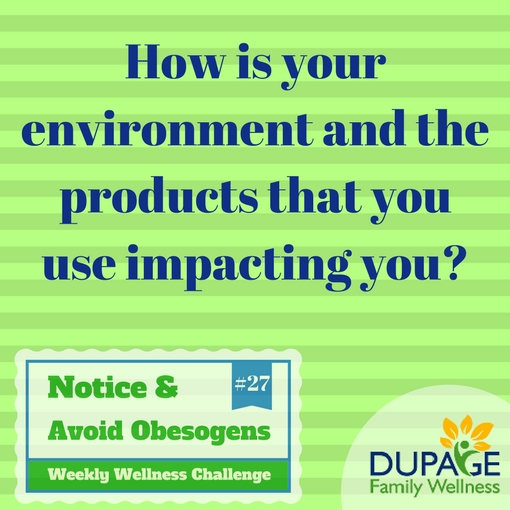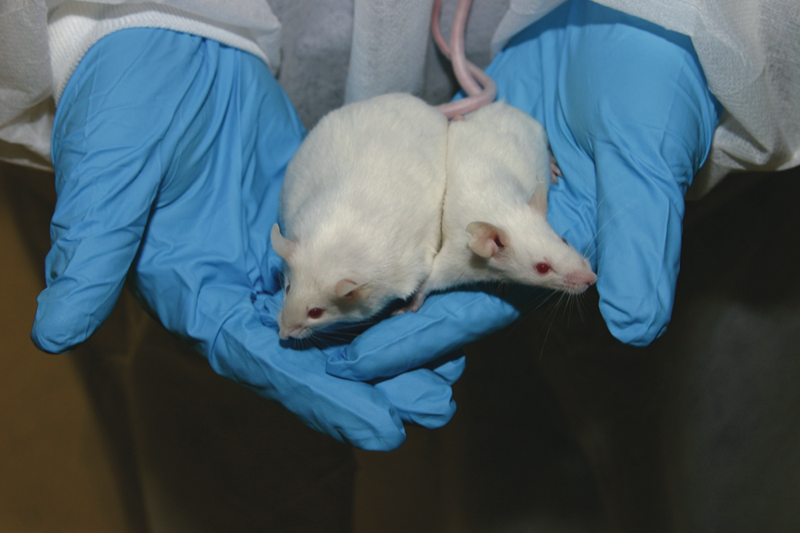 Have you ever heard of an Obesogen?
Have you ever heard of an Obesogen?
It is a subclass of Endocrine (hormone) disrupting chemicals that might predispose individuals to become obese. I know most people think that you become obese over time by consuming more calories than you burn, but this is not the whole story. Other factors, like hormones can come into play. Check out this study.
A researcher exposed one of two groups of mice to a substance called perfluorooctanoic acid (PFOA). Low doses of exposure to this substance led to the exposed group having elevated serum leptin, insulin, and being overweight in mid-life when fed the same diet. If you think that a chemical like this is rare, you would be wrong. It has been commonly manufactured in the US since the 1940s and can be detected in the blood of 98% of the general U.S. population. It has been detected in carpet cleaners, microwave popcorn bags, water, food, and cookware (particularly Teflon). Check out this picture of two of the mice. The mouse on the right is clearly much slimmer than the exposed mouse on the left.

How does this apply to humans?
Researchers aren’t sure of the mechanism by which this happens, but there are some theories. One of these is that exposure activates a certain receptor called the PPAR-gamma receptor that increases the number and size of adipocytes (fat storage cells), and alters stem cells. Another potential mechanism is that it impacts the entire system changing our metabolic set points leading to increased risk of obesity.
So what are these chemicals that can contribute to obesity?
Here are some examples, but this list is constantly growing.
- Pesticides, Herbicides, Fungicides (another great reason to grow your own food, or know what your farmer is putting on your food!)
- BPA (canned food, medical devices, cash register receipts)
- PFOA (nonstick cookware, gor-tex, microwave popcorn bags, carpeting, clothing, backpacks, luggage)
- Phthalates (plastic, vinyl toys, wall paint, air fresheners, beauty and bath products)
- Soy (food, in many processed foods, and sometimes fed to animals that aren’t grassfed)
- MSG (packaged foods, canned foods, soups, restaurant foods)
- TRT1 (vinyl, preservative for wood, textiles, and carpets)
- Artificial Sweeteners (diet drinks, many low fat foods)
- Antibiotics (given to humans and given to livestock)
- PCBs (found in some meat poultry and dairy)
Is there a way to tell what chemicals are in your products?
Yes, most products have an ingredient list that you can read to see what they are made of. If it isn't on the package directly, try googling it. Here is where things get a bit trickier. What do those names mean? How can you tell if they are disrupting your hormones (or worse yet, downright dangerous)?
There is an app that you can download to your phone called "Think dirty-Shop Clean" that has many home and beauty products listed. You can type names into the app or scan bar codes, and it will give you a rating on how toxic or non toxic the product is. A similar idea in a website can be found at www.goodguide.com. The Enviromental Working Group website is another great place to learn more about toxins in water, food, and products. Try plugging in a few of your commonly used products to one of these sites, and see what the rating is (soaps, shampoos, deoderants, makeup, etc.)
How to avoid these chemicals
I don’t expect perfection as these things are really hard to avoid 100% in todays world. That being said, I do believe it is worth it to attempt to reduce your exposure. There are some simple changes that you can make to reduce your exposure.
- Slowly rid your life of plastic - Use glass containers to store leftovers, pack your lunch, and drink water from. Bring your own bags when you shop.
- Check your products using the app or website above. I’m not saying dump everything that you have, but when it is time to buy new, upgrade to less toxic products.
- Ask for some less toxic products for Christmas.
- Try to buy locally from sources that you trust
- Eat real food (meats and produce) as opposed to food made in a factory that is packaged in plastic and cans.
- Replace non stick cookware with cast iron, ceremic, glass, or stainless steel
I am not trying to scare you with this article. I am trying to make you conscious of your environment and the products that you choose to use in case you were unaware that they could be disrupting your hormones. I'd love to hear your thoughts on this. Feel free to chat with me on facebook or simply reply to this email.
Dr. Jamie

